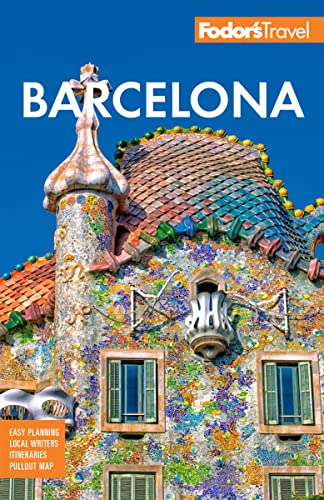Eating and Drinking Well in Barcelona
Barcelona cuisine draws from Catalonia's rustic country cooking and uses ingredients from the Mediterranean, the Pyrenees, and inland farmlands. Cosmopolitan influences and experimental contemporary innovation have combined to make Barcelona, historically linked to France and Italy, an important food destination.
The Mediterranean diet of seafood, vegetables, olive oil, and red wine comes naturally to Barcelona. Fish of all kinds, shrimp, shellfish, and rice dishes combining them are common, as are salads of seafood and Mediterranean vegetables. Vegetable and legume combinations are standard. Seafood and upland combinations, the classic mar i muntanya (surf and turf) recipes, join rabbit and prawns or cuttlefish and meatballs, while salty and sweet tastes—a Moorish legacy—are found in recipes such as duck with pears or goose with figs.
Cava
Order "Champagne" in Barcelona and you'll get anything from French bubbly to dirty looks. Ask, instead, for cava, sparkling wine from the Penedès region just southwest of the city. The first cava was produced in 1872 after the phylloxera plague wiped out most of Europe's vineyards. Cava (from the "cave" or wine cellar where it ferments) has a drier, earthier taste than Champagne, and slightly larger bubbles.
Salads
Esqueixada is a cold salad consisting of strips of raw, shredded, salt-cured cod marinated in oil and vinegar with onions, tomatoes, olives, and red and green bell peppers. Chunks of dried tuna can also be included, as well as chickpeas, roast onions, and potatoes, too. Escalibada is another classic Catalan salad of red and green bell peppers and eggplant that have been roasted over coals, cut into strips, and served with onions, garlic, and olive oil.
Legumes
Botifarra amb mongetes (sausage with white beans) is the classic Catalan sausage made of pork and seasoned with salt and pepper, grilled and served with stewed white beans and allioli (an olive oil and garlic emulsion); botifarra can also be made with truffles, apples, eggs, wild mushrooms, and even chocolate. Mongetes de Sant Pau amb calamarsets (tiny white beans from Santa Pau with baby squid) is a favorite mar i muntanya.
Vegetables
Espinaques a la catalana (spinach with pine nuts, raisins, and garlic) owes a debt to the Moorish sweet-salt counterpoint and to the rich vegetable-growing littoral along the Mediterranean coast north and south of Barcelona. Bits of bacon, fatback, or jamón ibérico may be added; some recipes use fine almond flakes as well. Albergínies (eggplant or aubergine) are a favorite throughout Catalonia, whether roasted, stuffed, or stewed, while carxofes (artichokes) fried to a crisp or stewed with rabbit is another staple.
Fish
Llobarro a la sal (sea bass cooked in salt) is baked in a shell of rock salt that hardens and requires a tap from a hammer or heavy knife to break and serve. The salt shell keeps the juices inside the fish and the flesh flakes off in firm chunks, while the skin of the fish prevents excessive saltiness from permeating the meat. Suquet is favorite fish stew, with scorpion fish, monkfish, sea bass, or any combination thereof, stewed with potatoes, onions, and tomatoes.
Desserts
Crema catalana (Catalan cream) is the most popular dessert in Catalonia, a version of the French crème brûlée, custard dusted with cinnamon and confectioner's sugar and burned with a blowtorch (traditionally, a branding iron was used) before serving. The less sweet and palate-cleansing mel i mató (honey and fresh cheese) runs a close second in popularity.





